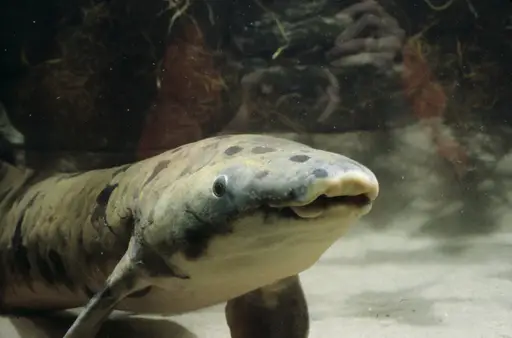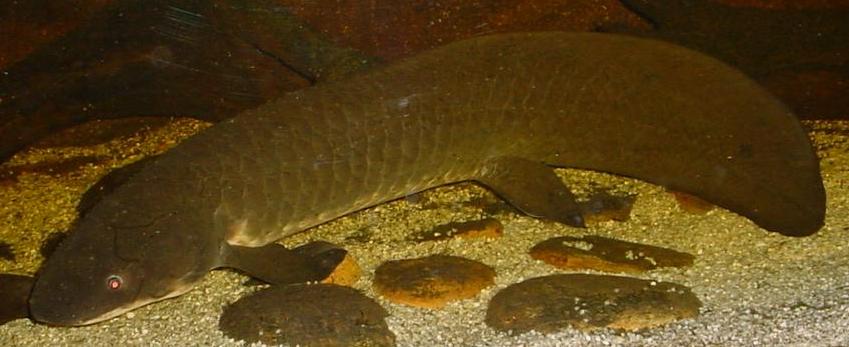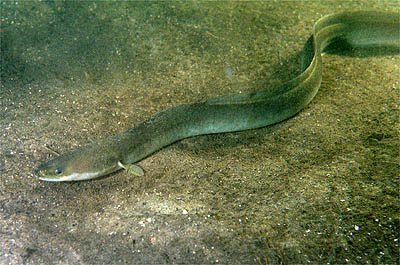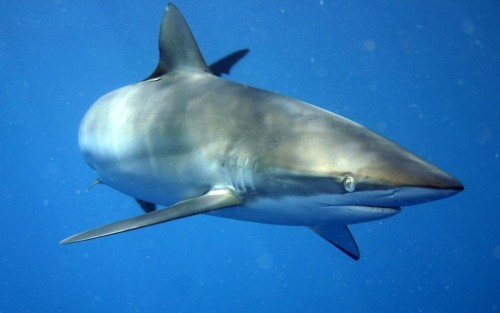Lungfish
The interesting creature of the day is the Lungfish a.k.a salamanderfish. As with many animals, the name already tells you what’s so special about this fish – it’s got lungs! The swimming bladders that are common to almost all the fish have modified so that they can also absorb oxygen. In fact some species of the lungfish can drown if kept underwater for too long. Another interesting fact is that a specimen called Granddad is over 80 years old that makes him the oldest fish ever (at least in captivity).
Lungfish can be found in Australia, South America and Africa. There exists a total of eight different species, 6 in Africa, one in Australia and one in South America . They all share the fact that they have developed lungs which allow them to breathe air in bodies of water with low oxygen levels. These lungs are similar to those found in primitive amphibians. In fact there are studies suggesting that the Australian lungfish haven’t changed in 100 million years.
All species of lungfish grow large and the African lungfish can grow to be over 6 feet / 2 m long. Some species build nests for their eggs. The nest is then protected by the male until the fry (baby fish) have hatched. The fry have gills that disappear as the fish grow older. The Australian lungfish does not build a nest – the female deposits the eggs on the bottom of the river / lake. Lungfish are predators and will eat anything they can get a hold of and that fits into their mouth. Their diet consists of fish, crayfish, crabs and anything else meaty they might find. Lungfish accepts most water conditions (although one should avoid to high pH levels) and can live in waters that other fishes couldn’t survive in due to their ability to breathe air.
Lungfish can survive in very little and even without water. The South American lungfish do this by digging a hole in the mud where they build a nest in which they remain until water levels raises again. The African lungfish have taken this a step further and cover their body with a secretion. This secretion dries to a leathery cocoon that helps the lungfish to survive until the water returns. The lungfish remain dormant until the water returns and they will lower their metabolism during the hibernation period which allows them to consume very little to survive. Some scientists have found that the energy consumption drops to approximately 1.6% of the normal rate. The fish can survive up to two years this way. The Australian lungfish doesn’t hibernate in this manner instead they survive in whatever water remains by breathing oxygen, and because of this they can be found in very small water bodies.




